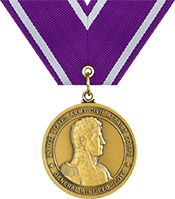Volume 11 of the Civil Affairs Issue Papers Is Out!
- Eunomia Journal
- Feb 15
- 3 min read

With the generous support of the ROTC Department of Niagara University, the Civil Affairs Association has published Volume 11 of the Civil Affairs Issue Papers on “Teaming Civil Affairs: Lessons from the Field.” In addition to the report on last fall’s Civil Affairs Symposium and the final version of the Association’s Narrative Strategy for Civil Affairs, the volume contains the five papers selected for publication during the Symposium:
“Improving Civil Affairs Teaming with Private Sector Tools” - by David Skrzypiec and Ted Delicath
“The Evolution of Civil-Military Cooperation (CIMIC)” - by Peter Schaefer
“Civil Affairs Task Force: Conflict Prevention through Multicomponent Teaming” - by Tony Smith and Adam Frowein
“Building Partner Capacity: The Value of U.S. Army Reserve Civil Affairs - by Bradford Hughes
“Teaming to Operationalize Culture for Campaigning” - by Jack A. Schultz and Tara R. Scardino

As the Association’s capstone professional and force development enhancement platform, the Civil Affairs Issue Papers deepen and broaden formal processes along the lines of doctrine, organization, training, material, leadership and education, personnel, facilities, and policy (DOTMLPF-P). Now in their 11th year of advancing a more strategic, comprehensive, and integrative understanding of CA, they also contribute to a learning organization beyond military command structures, including allied and counterpart civil-military organizations, interagency and interorganizational partners, and academic and private sector partners.
Among the Symposium Report’s observations:
Teaming is an inherent military problem; CA is best positioned among forces to take a teaming approach to deal with complex civil-military problems in conflict prevention, combat operations, stabilization, and competition.
CA professionals must understand the role of Joint and Service proponents for Civil Affairs and the rich array of policy, doctrinal, and operations references they produce.
Teaming alone is not a sufficiently comprehensive solution for CA to help commanders solve their human dimension and civil environment problems.
At the interagency level, planning relationships are foundational to civil-military teaming, partnering, campaigning, and operational integration across the continuum.
CA is not sufficiently prepared for the violence, lethality, complexity, and dynamism of 21st-century large-scale combat operations (LSCO).
Teamed 38G capability is proving highly important to shaping the strategic and operational environment to provide real-time values-added for deterrence and LSCO.
“A cornerstone conclusion,” noted Association president, retired Maj. Gen. Hugh Van Roosen, in his foreword, “was that CA professionals must become more conversant in the policies, doctrine, and guidelines that govern their operations and those of the partner organizations with which CA works. CA commanders must develop, on a unit and personal basis, a stronger relationship with their supported commands and be prepared to play the role of that commander’s primary advisor in all things civil-military in the human dimension and information domain. In other words, they must know how CA supports LSCO.”
Another, from Symposium keynote speaker and U.S. Agency for International Development Assistant Administrator Ciara Knudson, was that future LSCO will still be fundamentally driven by politics, people-centric, informationally intensive, and involve situations in which the U.S. military is not in charge or even the lead force. For this reason, the demand for CA capacities and capabilities will significantly increase.
To fulfill the need for a strategic narrative for CA professionals to speak with supported commands with one voice about what Civil Affairs is; what CA does; and why and how CA is important, the Association produced “Telling the Civil Affairs Story – A Narrative Strategy for Civil Affairs,” included in this year’s volume and posted on its website for adaptive use.
While the findings, opinions, and recommendations of this singular source document are representative of the extended family of the CA Corps, they do not represent official opinion of any kind. This document enables operator input to the CA proponent offices and Army, Marine, and joint commands and institutions on professional and force development issues, giving voice to those with the greatest stake in the future of their enterprise. These papers are also increasingly read at major service, joint command, and defense policy levels, including the Assistant Secretary of Defense for Special Operations and Low-Intensity Conflict (ASD (SO/LIC).
Issue Papers volumes are downloadable from the Issue Papers and Reports page on the Association website.
Beyond the annual Issue Papers, the Association provides discussion and discovery all year 'round on the Eunomia Journal, One CA podcast series, and on its YouTube channel as well as on Facebook, LinkedIn, and other social media. Contributors from all walks are always welcome.
For more, go to the Civil Affairs Association website and remember to subscribe or update your member profile. If you’re not a member, consider joining!

